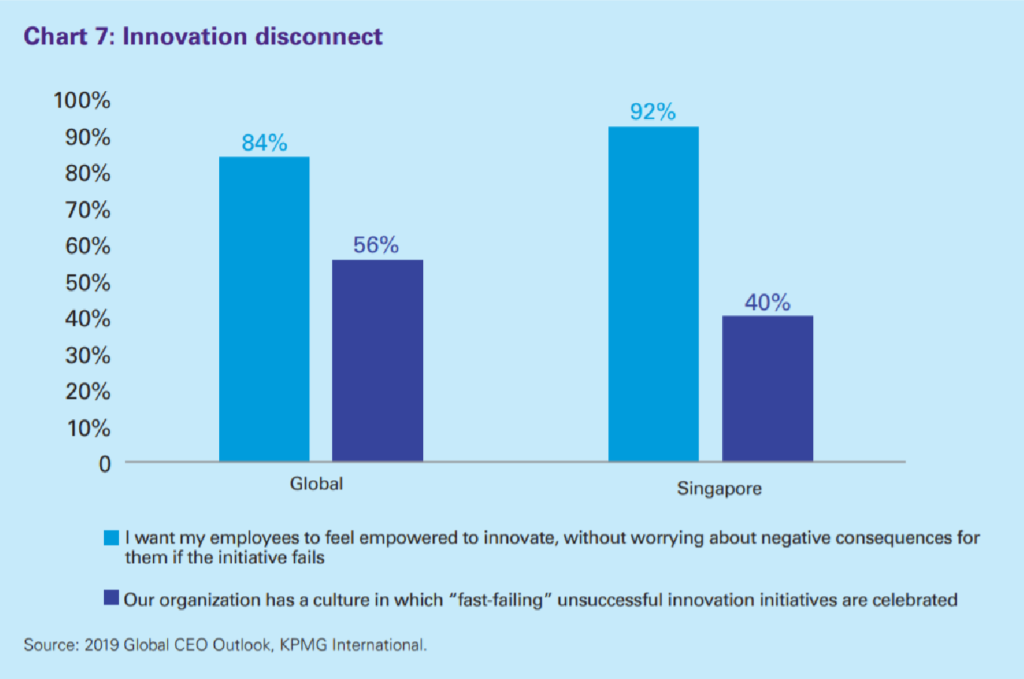In a world where change is the only constant, innovation is a tool that is essential to any organisation that doesn’t want to be made obsolete in the next few years.
While the need for innovation is not unique to the banking sector, the need for banks to be innovative is more important now than ever as they are facing unprecedented levels of disruption.
With bigtech and heavily funded digital banks all eyeing a piece of their pie, its worthwhile to consider why despite investing large amounts of money their innovation initiatives still fall flat.
This is often because many banks and large companies are obsessed with adopting practices that are in style and attempt to imitate strategies of other successful organisations without due consideration of how it would fit into their own unique situation.
It’s a tale as old as time with big companies telling themselves that they need to operate like startups, but what many leaders fail to realise is that many startups operate under circumstances that would prove challenging for a large organisation to imitate.
And no — just because you’ve ditched your ties that doesn’t mean that you’ve suddenly embraced a culture of innovation, despite how many CEOs will jokingly tell you at their keynote speeches that this is evidence that they are now all about innovation.
In order to truly be innovative, companies must be able to formulate and create a clear strategy, design and innovation system and build an innovative culture.
Starting With Having The Right Culture
At the core of it, organisations must not be afraid to fail, innovation is driven by a mindset of learning to fail fast, grow from failures and creating a truly unique and exceptional customer experience that drives impact and helps the company achieve its goals.
This is described succinctly by Amazon’s CEO, Jeff Bezos who said “If you double the number of experiments you do per year you’re going to double your inventiveness”
It is an area than many Singaporean CEOs are still struggling with, as evidenced by our recent 2019 Global CEO Report. Despite their desire to empower their team to innovate, there’s disconnect between that and the culture of failing fast.

Good leaders know that failures are necessary for growth but great leaders know that embracing failures doesn’t neccesarily mean that it is acceptable to keep failing. Leaders need to help their team to navigate when conviction to push the project through is needed and when its time to pull the plug an spend their time on a different idea.
There are no hard and fast rules on how many attempts to keep going before moving on, but it is important to create a culture in which your leadership team is not penalised for taking such risks.
It’s tricky, but organisations also need to be able to balance the fine line of embracing failure and being intolerant towards incompetence. It is acceptable to for ambitious and risky ideas to fail but it is not acceptable for it to fail due to poor management, misplaced strategy or an ill-equipped workforce.
If those are the reasons for failure, it is something that your leaders need to be held accountable for.
An innovation strategy and system
Innovation is of course just not as simple as trial and error process, it is a process that needs to be managed. Organisations need to follow a disciplined approach in order to succeed in innovation.
Harvard Prof. Gary Pisano describes in his recent book ” Creative Construction: The DNA of Sustained Innovation” that the key here is to align innovation efforts with business strategies and have very clear specific objectives. More specifically, executives must ask themselves:
What value are you trying to create?
Decide what kind of value we want to create and stick to it. Few companies are actually customer centric. They say they are, but mostly just in theory or in some daily user group survey. True customer-centric organisations should map the entire customer journey from end-to-end and make sure to check where the weak links are.
How the company will capture a share of the value that its innovation generates
Once a new product or service is released, consider what complementary products and services can be released to fence off competitors.
Defining the type of Innovation
Pisano divides innovation into four categories — routine innovation, disruptive innovation, radical innovation. Organisations need to identify which basket their initiative falls under and allocate resources accordingly.
It Doesn’t Have to Be This Difficult
KPMG Digital Village has been helping organizations chart their innovation journey for over 3 years now. Our human centred design approach together with agile delivery allows us to rapidly prototype innovative propositions and generate maximum results out of our clients’ investment, helping them outpace their competitors.








